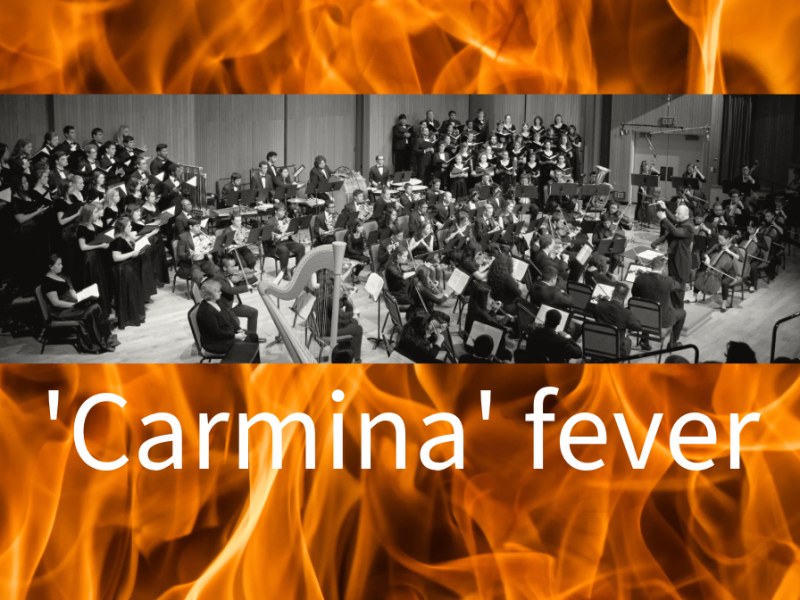Focus on Jasmine Habersham: She gets personal about Audra McDonald, opera and Mahler’s 4th Symphony with the Fresno Philharmonic
Jasmine Habersham makes her debut with the Fresno Philharmonic this weekend, and she couldn’t be more excited to visit the hometown of one of her biggest inspirations. The soprano, who has performed as an opera and concert singer in such venues as Atlanta Opera and Utah Festival Opera, joins the orchestra and music director Rei Hotoda for a performance of Mahler’s 4th Symphony. Concerts are 7:30 p.m. Saturday, Feb. 3, and 3 p.m. Sunday, Feb. 4, at the Paul Shaghoian Concert Hall.
I got a chance to talk with Habersham on Friday morning after she’d arrived in Fresno but before her first rehearsal with the orchestra that evening. Here are 5 Fascinating Things we talked about:
1. She’s happy to be in Audra Land.
Habersham was smitten with the Audra McDonald bug early. Fun story: When Habersham was 15, she attended a music camp in Georgia where she was introduced to the music of the Broadway musical “Ragtime” (one of McDonald’s early triumphs, for which she earned her second Tony award). Habersham was hooked. She learned “Your Daddy’s Son,” one of McDonald’s big numbers in the show, and performed it at camp. She also learned about McDonald’s album “Way Back to Paradise” and gobbled that up, too.
Up till then, Habersham had been inspired by musical theater, but she had also been told she had an operatic voice. Listening to McDonald inspired her to expand her own horizons. Ultimately, Habersham decided to a more operatic route – “I think I really found my place in opera,” she says – but she was encouraged by McDonald on a number of levels: Here was an amazing Black woman singer who didn’t feel constrained by labels.
“You can feel her in everything she does,” Habersham says of McDonald’s creative presence.
Though she’s never gotten to meet her singing idol, Habersham has seen McDonald perform several times. In fact, she saw McDonald twice on Broadway perform with Michael Shannon in “Frankie and Johnny in the Clair de Lune,” a non-musical play.
“It was amazing to see what she was like one night and then how she’d changed two weeks later,” she says. “She was never the same. That was one of the biggest acting lessons I ever learned.”
2. It helps to know the Mahler 4th Symphony’s history and inspiration.
The composer based part of the symphony on a German folk-song cycle he wrote titled “The Des Knaben Wunderhorn” (“The Boy’s Magic Horn),” which was based on a poetry collection of the same name. Mahler also wrote another song titled “Das himmlische Leben” (“The Heavenly Life”), which was based upon another poem from that poetry collection.)
When Mahler wrote his first version of the symphony, he included several vocal movements. But the final version only contains “The Heavenly Life,” the culmination of the piece. That’s where the soprano soloist comes in.
The singer is playing a character: that of a young child who has died of hunger and gone to heaven, where she describes the abundance she sees. (In an earlier song, we learn more about this child and how she repeatedly begged her mother for food, but the village has to wait for the harvest so the mother can bake bread.)
“All of this is from a child’s perspective, but especially from a child who experienced poverty and starvation,” Habersham says.
The Munro Review has no paywall but is financially supported by readers who believe in its non-profit mission of bringing professional arts journalism to the central San Joaquin Valley. You can help by signing up for a monthly recurring paid membership or make a one-time donation of as little as $3. All memberships and donations are tax-deductible.
3. Singing is also acting.
In the case of the 4th Symphony, Mahler offered plenty of hints to the singer in the score. He says to “sing with child-like, bright expression, and without the slightest suggestion of parody.”
As might be expected for a child who died of hunger, heaven is filled with food: “Good greens of every sort grow in the heavenly vegetable path … and gardeners who allow everything.”
“I really try to experience what I am feeling,” Habersham adds. “As a performer, I like to take that journey of storytelling with any text that I do.”
4. This is her first time singing in this symphony.
Preparation for Habersham started about two months ago. Since she doesn’t speak German, much of her focus was on language. But even more, she says, was about the poetry: reading the texts upon which Mahler based his musical narrative. She is moved by the vision of heaven that is evoked, and seeing it through the eyes of a wowed child makes the experience even more touching.
5. Finally: Someone needs to take her Audra McDonald Way for a photo.
As we talk about the concert, Audra’s name pops up again. I tell Habersham about the time I got to interview McDonald during the opening week of “Ragtime” in New York, and she responds with suitable fan-girl noises. She asks: Is the auditorium she’ll be singing in the one named for McDonald?
I tell her no, but the Roosevelt High School theater (named for McDonald) and the street named for her (Audra McDonald Way) is just a short drive away.
“It’s amazing how much of an impact she had on me,” she says.
Can someone give her a ride?











Margie
Thank you for the insight into tonight’s concert!! Really looking forward to it!